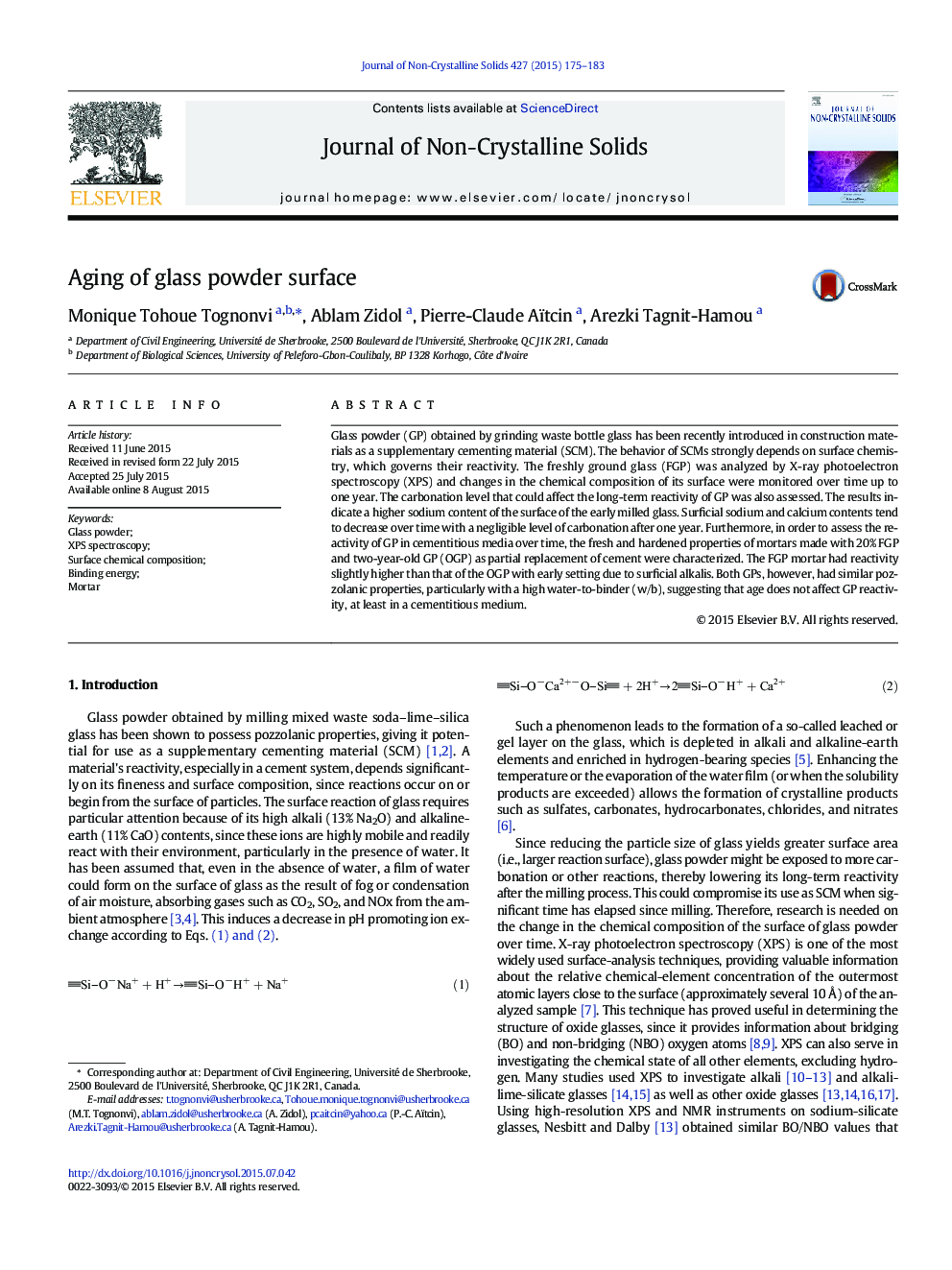| Article ID | Journal | Published Year | Pages | File Type |
|---|---|---|---|---|
| 1480680 | Journal of Non-Crystalline Solids | 2015 | 9 Pages |
Abstract
Glass powder (GP) obtained by grinding waste bottle glass has been recently introduced in construction materials as a supplementary cementing material (SCM). The behavior of SCMs strongly depends on surface chemistry, which governs their reactivity. The freshly ground glass (FGP) was analyzed by X-ray photoelectron spectroscopy (XPS) and changes in the chemical composition of its surface were monitored over time up to one year. The carbonation level that could affect the long-term reactivity of GP was also assessed. The results indicate a higher sodium content of the surface of the early milled glass. Surficial sodium and calcium contents tend to decrease over time with a negligible level of carbonation after one year. Furthermore, in order to assess the reactivity of GP in cementitious media over time, the fresh and hardened properties of mortars made with 20% FGP and two-year-old GP (OGP) as partial replacement of cement were characterized. The FGP mortar had reactivity slightly higher than that of the OGP with early setting due to surficial alkalis. Both GPs, however, had similar pozzolanic properties, particularly with a high water-to-binder (w/b), suggesting that age does not affect GP reactivity, at least in a cementitious medium.
Related Topics
Physical Sciences and Engineering
Materials Science
Ceramics and Composites
Authors
Monique Tohoue Tognonvi, Ablam Zidol, Pierre-Claude Aïtcin, Arezki Tagnit-Hamou,
